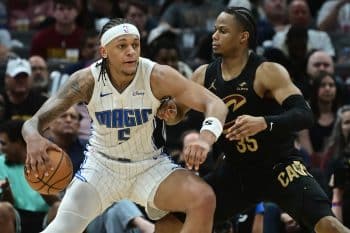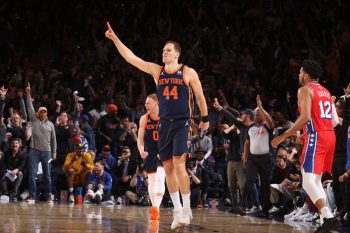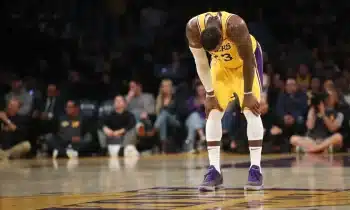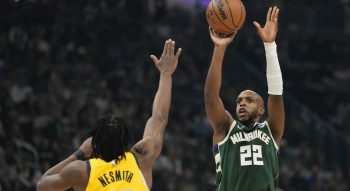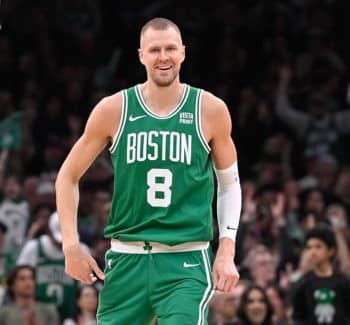NBA
How NBA League Pass is Changing
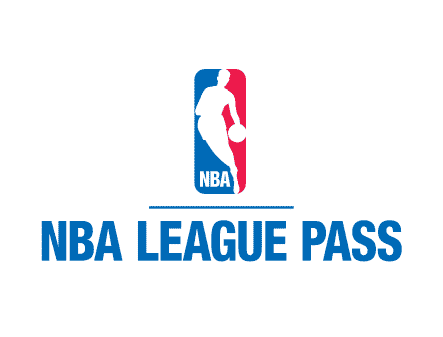
As the NBA continues to grow in popularity, demands for available programing rise in lockstep. A new mammoth TV rights deal that began last season promised increased visibility and advertising dollars, and was the primary factor in a sudden jump in the league’s salary cap figure. Between that and an exploding digital marketplace, there are a lot of eyes on the NBA as an entertainment product.
For the NBA fan interested in watching the entire league and not just their home market (or even for cord-cutters who only want to watch their local team), NBA League Pass is a familiar tool. Available for both single-team and league-wide subscriptions, League Pass is a multi-device platform that allows for both live and on-demand viewing of NBA games.
For many users of NBA League Pass, this is a relatively issue-free experience. For many others, though, League Pass has long lagged behind competitors in the digital sports sphere, with a number of glitches and absent features still present as recently as last season across multiple devices. These issues are a regular source of annoyance for NBA fans everywhere, particularly the most invested ones.
Basketball Insiders spent the summer investigating the causes of some of these issues, both with the NBA and with various extended providers of League Pass. Here’s what we found regarding previous issues, their fixes, and other developments to the service moving forward. (Also be sure to check out our broader report from earlier this week on some of the general new features being offered by League Pass.)
League Pass on TV
For several years at minimum, customers of most cable and satellite providers have been able to enjoy NBA League Pass with virtually no major issues. Companies like DirecTV, Dish, Uverse and others have all had solid programs for years, with full-HD channel lineups and a simple, straightforward purchasing and viewing process.
For customers of Comcast, however, things haven’t been so rosy.
Through the completion of the 2016-17 NBA season, Comcast XFINITY customers were not offered such a robust slate. Just a single high definition channel was available on League Pass via XFINITY last season, and even that one channel wasn’t dedicated only to NBA action.
Unless a game was being broadcast on a national station like ESPN or NBATV, you simply had to cross your fingers and hope that the game you wanted was the one that was showing in HD. Otherwise, you got to watch it in standard definition or not at all.
Before we discuss how this is slated to change moving forward, a necessary aside: This is crazy. Even before the new massive TV rights deal, the NBA was unquestionably one of the most popular sports in North America; for the largest broadcasting and cable television company in the world by revenue to enter the year 2017 without basic HD channels for the league – channels present in hundreds of other areas and on every other major provider, no less – is nothing short of asinine, and speaks to the limited alternatives available and the simple power of a conglomerate like Comcast.
Back to greener pastures: Changes are in motion, even if they’re still moving a little slower and more timidly than most customers would prefer.
Per sources familiar with the service, HD channel options will be in place for all games under Comcast XFINIFY’s offering of NBA League Pass during the 2017-18 season. These will be available under Comcast’s Beta program, one that’s been offered for both MLB and NHL programming over the last several years.
Beta pages are a bit nebulous and tough to access if you aren’t already paying for one of these services, but our research suggests they function reasonably well. There are multiple ways to access Beta channels, either via a voice or keypad search or through the guide – though doing it through the guide won’t be quite as simple as just clicking a single channel (you have to click a Beta channel, then choose the team you want to watch and wait for blackout and subscription verification).
Blackouts are still present for local markets and nationally televised games, but this is to be expected for all such services.
Now the bad news: There are some pretty serious limitations to this Beta program. Firstly, as you’ll note if you click the link above, it’s considered a trial offering. Features like recording, pausing or rewinding games will not be available. For the busy basketball fan who can’t be present to watch his or her team right from tipoff every night, this is an obvious problem.
Additionally, sources say that this Beta program will only be available by the end of November. As the astute NBA fan will note, the season began on October 17 – what about the time in between? The previous version of League Pass will still be available during this period, sources say, but XFINITY customers who want all their games in HD will be out of luck for about a month and a half. Combine that with some apparent clunkiness in accessing the games themselves, and this new development still leaves a lot to be desired.
Still, it’s progress where previously there had been very little. Sources say that work is being done to move each of the NBA, MLB and NHL offerings away from the Beta package and into full-time circulation, which would ostensibly get rid of most or all of those functionality issues. No firm dates were given for this, however, and NBA fans are probably safest assuming this will be the program for the full season once it kicks in during November. Make your purchasing decisions accordingly.
League Pass Broadband
Understanding how NBA League Pass fits into the broadband landscape requires a look back at the history of streaming sports technology. In particular, we have to look at a competitor: Major League Baseball.
For years, MLB’s streaming service has been considered something of a gold standard within the digital world, with numerous parties contacted for this story gushing about their quality. Basketball Insiders’ research revealed this to be a total falsehood – those compliments simply weren’t going far enough. The degree to which MLB has outpaced the field when it comes to streaming is almost shocking.
(For those only looking for the nitty-gritty details of what will change with NBA League Pass Broadband moving forward, skip to that section by clicking here.)
In the year 2000, while most of us were still worried about Y2K bugs and voting machines in Florida, Major League Baseball was getting to work pioneering online streaming sports. That was the year that the league’s owners centralized all digital rights into a new, independent tech startup called MLB Advanced Media, per sources. The “independent” part was important: MLB was purposefully building a distinct, separate entity that operated in a different facility than league HQ, hired tech-savvy folks and was, truly, its own company.
On August 26, 2002, MLB Advanced Media broadcasted their first live Major League game. Roughly 30,000 people (!!) tuned in to watch a Yankees-Rangers tilt on a date nearly three years earlier than famed video site YouTube would even launch on the web.
Over the next several years, MLBAM (pronounced em-el-BAM by insiders – it’s fun to say!) paved the way for streaming sports technology. They sold a nine-game pennant race package later that season, then a full-season package in March of 2003. By 2005, they had installed a private fiber network dedicated to streaming in all 30 MLB ballparks.
By 2008, two representatives from MLB were on stage and demonstrating the product as Steve Jobs introduced the Apple App Store for the very first time – MLB’s At Bat App was the first sports app in the history of the store, and one of the first 500 ever created of any kind. By 2010, they were pioneering connected devices like PlayStation and Xbox.
All the while, MLB made a concerted effort to keep all these efforts completely in-house. No outsourcing, no reliance on a third party.
Their success quickly started drawing attention. As other similar entities looked to enter the streaming space, they were faced with their own decision: To outsource, or to attempt to build a ground-up technology sector like MLB had.
Some went the outsource route, and their first call was to MLB. Few outside the industry knew it at the time, but MLB was behind the first-ever streaming of March Madness games on CBS Sports back in 2006, per sources. They’d later help ESPN in their switch from ESPN360 to ESPN3 in 2010, and assist with the advent of HBO Now in 2014.
Also in 2014, they helped create a groundbreaking new sector of the streaming world – a full OTT (over-the-top of subscription) network dedicated to WWE wrestling. This wasn’t just live matches, it was a full network complete with archives and on-demand programming. This kind of service is now called direct-to-consumer programming.
By this point, outsourcing demands had grown so much that MLB took some new steps. In 2016, MLBAM was spun off into a new entity called BAMTECH, which was in charge of all outsourced efforts (MLBAM remained on the baseball-only side). One third of BAMTECH was sold to Disney for $1 billion – a $3 billion valuation for what was at one time nothing but a tech startup. In August 2017, Disney acquired additional shares to reach a 75 percent controlling stake in the company at an even larger total valuation, per sources familiar with the finances.
Today, MLBAM continues to manage baseball-related streaming services while BAMTECH, now primarily owned by Disney, works with several other large entities. These include ESPN, the NHL and Riot Games, a big player in the rapidly rising eSports sphere. They also stream their own MLB client to over 400 different devices.
******
This is a high standard for any other sports or streaming entity to hold itself to, even one as successful as the NBA. Interestingly, though, MLB could end up serving as a perfect template for the path the NBA is now taking – just on a different timeline.
Just as the MLB decided years ago to prioritize their own in-house development of this technology, the NBA has recently done the same. About three years ago, Turner – which handles nearly all of the NBA’s entertainment assets – purchased a majority of a company called iStreamPlanet, a leader in the streaming technology sphere.
Founded in 2000, iStreamPlanet is perhaps best known in the industry for their recent work on the Olympic Games, which began in 2010 at the Vancouver Winter Games. Their coverage of Sochi in 2014 had over 9.1 million users in just 18 days of competition. They’ve also broadcast all the recent Super Bowls, starting in 2011.
Before the beginning of last season, the NBA and Turner migrated all of their League Pass technology over to iStreamPlanet, per sources familiar with the technology. This was in place of a previous internal solution that had managed League Pass streaming.
As one can imagine, the very first year under this new migration came with a few bumps in the road. The migration included a complete change of the infrastructure that processed video, from the way it’s taken to the way it’s encoded. New software was instituted, and then tech experts with Turner and iStreamPlanet meticulously went through each individual platform to diagnose issues and test functionality. Every platform has its own individual player and its own individual quirks, so this was no small project across a wide variety of platforms.
In essence, this was a test run for a product built from scratch. There’s really no other way to do this – for the NBA to truly build its own infrastructure here, they had to start from the ground up.
If last year’s inaugural season under the new technology was all about finding bugs and ensuring functionality across all platforms, the offseason has been all about fine-tuning the execution. The teams at Turner and iStreamPlanet analyzed every step of the video process, from when it left a given NBA arena to when it made its way to your device screen. They hardened the path of video from the venue to the fan, allowing it to arrive more quickly and in better quality.
A few specific changes, possible future changes, and notably similar areas to be aware of here:
- Per sources, changes to video encoding and pathways have resulted in roughly a 50 percent reduction in lag time compared to a television broadcast across a majority of NBA League Pass platforms. No platform experienced worse than a 33 percent reduction in lag time, with most up around this 50 percent figure. Lag time versus standard TV broadcasts has long been a prominent issue among broadband users.
- Down similar lines, extra steps have been taken to protect clients who want to watch games spoiler-free. A new “Hide Scores” button has been introduced at the top of users’ game menu – when clicked, it will remove the live scores from both completed and live games, allowing viewers to start watching a game late without having the score ruined for them in advance (though it appears users still have to manually rewind to the start of the game, so spoilers are still possible).
- With Adobe preparing to soon begin phasing out the Flash player from their content offerings, sources say Turner and iStreamPlanet are working on an eventual transition of NBA League Pass from Flash technology over to HTML5. This transition is expected this season for both live and on-demand content.
- While it won’t please some customers, blackout rules across all areas of League Pass appear to remain the same. These are issues of media rights, and unfortunately that’s just how things work.
- Customers have access to numerous platforms, with up to five connected devices per customer.
- Standard log time for games to enter the on-demand section of League Pass streaming is between 48 and 72 hours – once again, some of this is related to business rules with the NBA and regional television networks. For condensed games, the turnaround time is closer to an average of 24 hours.
- The NBA is offering a free trial preview of League Pass services from now through October 24.
Once again, things won’t be perfect overnight. Lag issues still exist, and media rights considerations make certain bits of timing sub-optimal. Like any platform still in its earlier stages in a relative sense, there will be glitches here and there.
When you experience these issues, speak up. Turner has a full support team in place, with logging capabilities that allow them to identify issues that frequently come up among customers – this process is how some of their biggest changes have taken place over the last year.
Stay tuned to Basketball Insiders for any updates or changes to NBA League Pass in the future.
